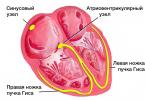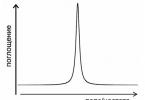On April 21, a new technical regulation "On the requirements for emissions of pollutants by motor vehicles put into circulation on the territory of the Russian Federation" came into force. According to this document, all car factories located in Russia must produce cars that meet at least Euro-2 requirements.
It should be noted that all of Europe, the USA and Japan are currently producing engines that comply with the more advanced Euro-3 standards, and the Euro-2 standard was introduced back in 1995.
What are these rules? They regulate the content of harmful substances in the exhaust gases of a car. The main measurement parameter is the content of carbon dioxide, but, of course, other parameters are also normalized - nitrogen oxide, hydrocarbons, carbon monoxide, as well as many other particles that are harmful and unecological ...
In order for a car to comply with the Euro-2 standard, it is only necessary to install a fuel injection system, called an injector, instead of an archaic carburetor.
"Euro-3" is already more complicated, although the same injector remains at the core. But to comply with more stringent standards, an increase in injection energy is required. As a result, this contributes to a more complete combustion of fuel in the combustion chamber, and, accordingly, as a result, less harmful substances enter the atmosphere.
According to the Euro-4 standard, fuel afterburners (catalysts) are being introduced into the fuel system. But the standard is not limited to mechanical changes to the vehicle's fuel system. It also requires the appropriate quality of fuel.
There are often problems with this in Russia. Despite the fact that at present many cars that support the Euro-4 standard are already used in our country, fuel even at proven gas stations periodically contains foreign impurities. This is an additional burden on the catalysts, which fail much faster. The part itself is not cheap, so in garage workshops, some craftsmen simply remove the catalyst from the fuel system and reconfigure the engine control computer. However, such intervention in the car is not carried out everywhere, therefore, for a number of car owners, whose car engine is the most environmentally friendly, each gas station, without exaggeration, turns into a lottery with its own wallet.
According to control and verification structures, about 25 percent of gasoline sold in Russia does not meet not only international, but also Russian environmental standards. According to expert estimates of the Russian Ministry of Industry and Energy, most Russian refineries do not yet have the technological capabilities to produce high-quality high-octane gasoline for the domestic market, especially the 95th. More than 40 percent of the total fuel produced is low-octane fuel grade A-76 (Ai-80). It should be noted that Euro-3 standard gasoline, which, by the way, is planned to be transferred to the Russian fleet from 2008, is produced in our country by only 3 oil refineries.
The benefits of introducing new standards will be enormous. First of all, from an environmental point of view. In 2000, when trucks and buses produced in Russia switched to Euro-2 standards, the amount of harmful emissions fell by 2-3 times. The introduction of these standards for passenger cars can reduce the environmental burden on our lungs by 10 times!
And taking into account the fact that the car park in our country is growing at a progressive pace, the introduction of Euro-3 standards from January 1, 2008, Euro-4 - from January 1, 2010, and Euro-5 - from 2014 year does not look such a hasty decision. Moreover, according to expert estimates, the Russian car fleet is 90 percent Euro-0, 5 percent Euro-1, 4 percent Euro-2, and only 1 percent out of 24 million cars traveling across the expanses of the country belongs to cars that meet Euro-3 standards.
Incidentally, since January 1, 2006, it has been forbidden in Europe to produce and sell cars that do not meet Euro-4 standards, so the Russian auto industry and related industries have someone to look up to.
For the average Russian motorist, of course, the introduction of stricter environmental limits will lead to two negative points. First, the price of cars will rise. According to conservative estimates, the installation of a fuel injection system will increase the price of the most popular Russian cars by $300 to $500. Secondly, the price of fuel will also rise, because the re-equipment of production will certainly affect the selling price.
In this situation, the interests of the inhabitants of the village and the regions of Siberia, the Far North and the Far East, remote from civilization, will primarily suffer, because it is much easier to repair, as they say, "on the knee" a car equipped with a carburetor than an injection one. But on the other hand, if we think about what kind of planet we will leave to our children and grandchildren, then the tightening of environmental requirements should be treated with understanding. There is no alternative to this yet.
- catalytic converter or diesel particulate filter
Chip tuning for Euro-0
Chip tuning for Euro-2
An example of a recall about the firmware with the transition to E2.
Chip tuning with preservation of toxicity standards (E4, E5, E6)
Some customers prefer to flash the ECU while maintaining factory toxicity standards. Often this choice is made by car owners who are under warranty from the dealer. From an environmental point of view, this is the most correct option. We try to stick to it.
ADACT specialists will make a quality check of your car and install the firmware that is most suitable for a particular car.
">Chip tuning of the engine is done both with the preservation of the factory Euro standards, and with the transition to another standard that is less demanding on emission control.
Firmware for other Euro standards is done in 2 cases:
- The owner of the car has problems with the catalyst or particulate filter. A malfunction symbol appeared on the dashboard, and according to the diagnostic codes P0420 and P0430 or P1447, P1448, P1901, 480A, 481A, etc.
Replacement is expensive. It is easier to remove the catalyst or particulate filter and adapt the firmware to E2 / E3 standards.
- The owner wants to upgrade to another level of environmental standard to increase the car's dynamics.
Let's dispel the myth that switching to another Euro standard can harm the engine. There are no negative consequences. The change will be one: the emission of carbon dioxide will increase with an increase in dynamics.
We will get the optimal quality of the fuel mixture, since the ECU no longer needs to take care of the safety of the catalyst or the particulate filter due to cardinal changes in the composition of the mixture.
Chip tuning for Euro-0
Euro 0 is the oldest standard (1988). The allowable limit for carbon monoxide emissions for it is 22 times higher than for Euro-4. Firmware for this standard is made infrequently. Basically, if they want a sharp increase in dynamics and are not afraid of an increase in fuel consumption (sports tuning). We recommend higher standards.
Chip tuning for Euro-2
Most often they switch to Euro-2 with chip tuning with a change in the environmental standard. Emissions increase slightly, and the dynamics change dramatically for the better. Dips disappear, the cut-off shifts, power increases and even the sound of the engine becomes different. When switching to E2, it is necessary to remove the catalyst or particulate filter. It is important to note that there are no problems with passing the inspection. The transition to Euro-2 does not affect the dealer's warranty either.
How do they differ from ordinary apartments?
More and more popular in Russia are "euro 2 room apartments" or "euro apartment layouts". They can be not only Euro 2 rooms, but also Euro 1 and Euro 3 rooms.
The question immediately arises - what is it? And how do they differ from ordinary apartments?
How didEuro two-room apartments
Housing construction in Russia is gaining momentum every year. All developers basically build the same familiar apartment layouts, familiar to us since the days of the Soviet "Khrushchev". They differ only in size and price.

There are more and more identical housing in the country, and the purchasing power is becoming less and less.
Therefore, there is competition.
Now the buyer is in no hurry to buy an apartment from the first developer he comes across, now he looks at which developer has better quality, which one is cheaper and who has a more interesting layout.
And how to compete if all developers offer approximately the same apartments?
This is where some young, creative developers decided to turn to foreign experience and adopt all its advantages.
How we live in our apartments
Let's be honest, we spend most of our time in the kitchen.
On average, the area of a standard kitchen in our country is 10-12 m2.
We have breakfast in the kitchen, we also have lunch in the kitchen. And in the evening, after work, in the kitchen at dinner, a whole family meal, accompanied by discussions about who and how the day went.
In parallel with these, we watch TV - as a rule, these are news or favorite TV shows.
By the way, we also receive guests in the kitchen.

And all this in 10-12 m 2 of a small kitchen.
After that we go to the hall with an area of 16-18 m2 and sleep.
Agree not quite rational use of living space. We spend most of our lives in a small (10-12 m 2) kitchen, and the smaller part of the time we only sleep in a large hall of 16-18 m 2.
Howeuro 2sdifferent from ordinary apartments
Abroad, apartment layouts are based on the concept of people living in them. As a rule, these are either 2 rooms of the same size - a living room and a dining room, or a large kitchen-living room and a small bedroom for sleeping.

Do you already feel rational or not?
Some developers in Krasnodar, seeing rational euro 2-room apartments abroad, guessed to simply change the purpose of the rooms. Where there used to be a kitchen → they made a bedroom, and where there used to be a hall → they made a kitchen-living room. That's all.

The way out turned out to be very simple.
Now we spend most of the time in the kitchen-living room 16-18 m 2, and the smaller, only sleep, in the bedroom 10-12 m 2.
Agree, it has become much more convenient to live in such apartments!? Of course, if you are not a hostage of Soviet stereotypes))).
Therefore, euro 2-room apartments can be safely called - " Superior comfort apartments for a modern person.
However, that's not all.
You will say that it is difficult, they just took and swapped the rooms. Make really cool, modern euro apartments.
You know, there are those too.

Some developers have begun to create modern, unrealistically cool 2-level apartments in Krasnodar.
You will be surprised, but such apartments, yes, are inexpensive. Prices and layouts of 2-level euro apartments, you can see here →
Western European countries adopted the Euro 2 standard in 1995. In Russia, it began to operate only in April 2006, while our country did not certify cars and fuel for Euro 1, introduced in Europe in 1992, but immediately stepped over to Euro 2.
It was supposed to operate in Russia from 04/01/2006 to 01/01/2008, but subsequently the introduction of the Euro 3 replacement was postponed to January 1, 2013.
Basic provisions of Euro 2
Since the main focus of the Euro standards is environmental protection, the requirements of Euro 2 were reduced to a further (in relation to Euro 1) reduction of emissions of harmful substances in the exhaust of automobile engines:
- the content of carbon monoxide CO was reduced from 2.72 to a value of 2.2 g/km (grams per kilometer) for a gasoline engine, from 2.72 to a value of 1.0 g/km for a diesel engine;
- the emission of hydrocarbons and nitrogen oxides was reduced from 0.97 g/km to 0.5 g/km for petrol engines and from 0.97 to 0.7 g/km for diesel engines;
- the content of soot in the exhaust of diesel engines was reduced from 140 to 80 mg/km;
- for the first time, the mass fraction of sulfur as a harmful substance in diesel fuel was limited: its concentration according to Euro 2 should not exceed the threshold of 500 mg / kg;
- the content of benzene in the fuel was limited to a level of 5%;
- Tetraethyl lead additives, which increase the octane number of gasoline, received a final ban.
The energy characteristics of Euro 2 diesel fuel practically do not differ from Euro 1, and in environmental terms, the new requirements clearly strengthened the protection of the surrounding world. All further changes in the certificate (Euro 3, 4, 5) continued the line of consistent quantitative restrictions on harmful substances in engine exhaust.
Fuel Euro 2 in Russia

To determine what kind of fuel was Euro 2 in Russia, let's turn to our regulatory documents.
To introduce international requirements for Euro certification into Russian standards, GOST R 52368-2005 was issued, which actually interpreted the European standard EN 590 into the legislation of our country. Euro 2 diesel fuel in this document is obviously not designated as obsolete, since the requirements are set for fuel types starting with Euro 3 (in GOST it is designated by the environmental group Type I with a sulfur level of 350 mg / kg).
Euro class 2 diesel fuel is not indicated in the later regulatory document - GOST 32511-2013. It also sets parameters for fuels from Euro 3.
Euro 2 fuel quality is described only by the technical regulation RT CU 013/2011, adopted by the Customs Union in 2011 for Russia, Kazakhstan and Belarus. In the document, this fuel appears under the environmental class K2 with a sulfur level threshold of 500 mg/kg.
From Thursday, September 25, entry into the center of Moscow will be banned, which, according to the city authorities, will reduce pollutant emissions by 8,000 tons per year - about 5%.
The Agreement for the Adoption of Uniform Conditions for Approval and for the Mutual Recognition of Approval for Motor Vehicle Equipment and Parts (also known as the Vehicle Standardization Agreement or the Geneva Agreement) was adopted on 20 March 1958 in Geneva. Within the framework of the Agreement, more than 100 resolutions of the United Nations Economic Commission for Europe (UNECE Regulations) have been adopted to ensure road safety and environmental protection.
Countries that have acceded to the Agreement use the ECE Regulations for certification testing of road vehicles. Each party has the right to accept all or part of the rules, of which it notifies the UNECE according to the established procedure one year before the termination of the use of a particular rule, sending a notification addressed to the UN Secretary General.
Among the EEC rules and the so-called European standards for pollution produced by road transport. According to these rules and amendments to them, several types of Euro standards are distinguished, which differ in the limit values of pollutants produced by road transport.
The Euro-2 standard was introduced in Europe, the USA and Japan in 1995, the Euro-3 standards, which are 30 - 40% stricter than the Euro-2 standards, came into effect in 2000, and from January 1, 2005 was implemented full transition to the production of vehicles that comply with Euro-4 standards, which are 65 - 70% tougher than Euro-3.
In Russia, on April 22, 2006, a new technical regulation "On the requirements for emissions of pollutants by motor vehicles put into circulation on the territory of the Russian Federation" came into force. The regulation establishes that any automotive equipment put into circulation on the territory of the Russian Federation must, in terms of emissions of harmful (polluting) substances (CO, CH, NOX and dispersed particles), comply with an environmental class of at least the second ("Euro-2").
According to expert estimates, 90% of the Russian car fleet is made up of cars that meet Euro-0 standards, 5% - Euro-1, 4% - Euro-2, and only 1% of cars meet Euro-2 standards. 3".
According to the Regulations, the technical requirements for automotive vehicles and the internal combustion engines of ecological class 2 installed on it are as follows:
categories M(1), M(2) with a maximum mass of not more than 3.5 tons, N(1) with spark engines (petrol, gas) and diesel engines technical emission standards provided for by UNECE Regulation N 83-04 (emission levels B, C, D), UNECE Regulation No. 24-03 with amendment 1 (only for diesel engines);
categories M (1) with a maximum mass over 3.5 tons, M (2), M (3), N (1), N (2), N (3) with diesel and gas engines - technical emission standards provided for by the EEC Regulations UN 49-02 (Emission Tier B), UNECE Regulation 24‑03 Supplement 1 (Diesel only);
categories M(1) with a maximum mass of more than 3.5 tons, M(2), M(3), N(2), N(3) with gasoline engines - technical emission standards (CO - 55 g / kWh, CmHn - 2.4 g/kWh, NOX - 10 g/kWh) when tested according to UNECE Regulation N 49-03 (ESC test cycle).
Annex No. 3 to the Regulations establishes the main technical requirements for the characteristics of fuel for automotive vehicles. For fuel of ecological class 2 (Euro-2), the following characteristics are established:
For gasoline - the concentration of lead is not more than 10 mg/dm3, the concentration of sulfur is not more than 500 mg/kg, the volume fraction of benzene is not more than 5%, the saturated vapor pressure, taking into account climatic conditions: in summer - 45 - 80 kPa, in winter - 50 - 100 kPa;
For diesel fuel - cetane number not less than 49, density at 15C 820 - 860 kg / m3, sulfur concentration not more than 500 mg / kg, fractional composition - 95% of the volume distilled at a temperature not more than 360C, lubricity not more than 460 microns.
From January 1, 2008, the Euro-3 environmental standard began to operate in Russia, prohibiting the production in the country or the import into its territory of cars that do not meet at least Euro-3 standards. From January 1, 2010, Euro-4 standards will be introduced in Russia, and from 2014 - Euro-5.



